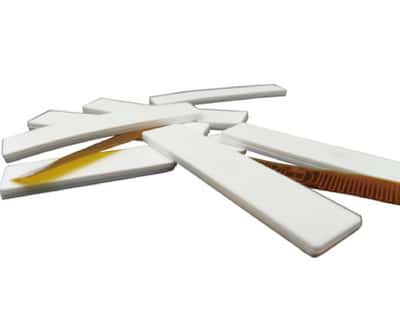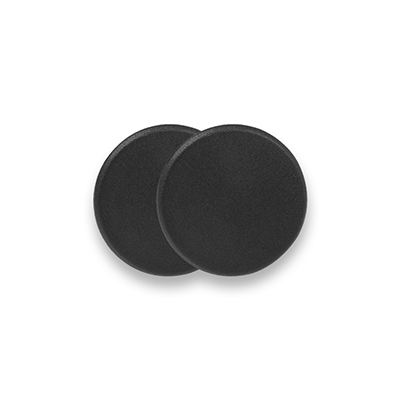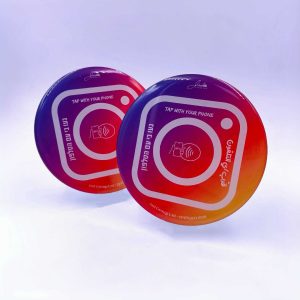NFC Payment is a service that enables smartphone-based payments. To use NFC payments, you must have an NFC-enabled device and an NFC payment application.
With NFC payment, you can tap to pay at participating retailers, as well as make payments online or through apps. Thus, you can leave your cash and credit cards at home and use your phone to pay.
What exactly is NFC?
Near Field Communication (NFC) is the abbreviation for “Near Field Communication.” It is a short-range wireless technology that enables close-proximity communication between two devices, such as your smartphone and a payment terminal.
It operates at 13,56 MHz and has a maximum data transfer rate of 424 kbps. It uses inductive coupling to generate a magnetic field that can power and enable communication between NFC devices. There are three primary types of NFC communication:
NFC reader communication
Emulation of Peer-to-Peer Communication Cards
However, the communication distance of this technology is only 4 inches (approximately 10 cm). To complete a transaction, you must tap or hold your device close to the NFC reader.
How do NFC Payments operate?
This method of payment employs card emulation mode, which transforms your mobile device into a virtual credit or debit card. When you are ready to pay, you will simply hold your device near the NFC reader and follow the on-screen instructions. The procedure resembles the use of a contactless card.
Your mobile device will communicate wirelessly with the payment terminal, and the transaction will be processed. You will receive a confirmation on your screen and/or a receipt once the transaction is complete.
NFC payment is a safe method of payment. Your personal information is secure and every transaction is encrypted. In addition, NFC payments can be secured with a PIN or biometric authentication, such as a fingerprint or face ID.
When using Apple Pay or Google Pay in a store, for instance, your phone is in Card Emulation mode. When you activate Apple Pay or Google Pay, the NFC chip in your smartphone generates a token/Device Account Number (DAN). The DAN is then stored on the Secure Element (SE), a chip that contains sensitive data.
Your DAN is masked by a token, preventing it from being used to identify you. When you bring your phone close to the NFC reader, the token is sent to the payment processor of the merchant. The processor then uses the DAN to route the transaction through your bank.
Based on your account history and available funds, your financial institution will then approve or reject the transaction. Once the transaction is approved, it is processed and a confirmation will appear on your screen.
Contactless Payment Cards MIFARE
Although MIFARE Cards are classified as RFID Cards, they employ a technology known as contactless smart cards. MIFARE Cards, which are based on the ISO/IEC 14443 standard, can be used for a variety of purposes, including payment.
In addition, these cards communicate with NFC-enabled devices via high-frequency (13.5 MHz) NFC. Consequently, they can be used for contactless payment, similar to NFC payment.
In contrast to mobile phone payment, which utilizes card emulation, this technology employs Reader NFC communication. When a MIFARE Card is held close to an NFC reader, the reader will communicate with the card and process the transaction.
MIFARE Cards are a safe method of payment. They employ encryption and access control mechanisms to protect your data from unauthorized access. In addition, these cards can be utilized with a PIN or biometric security feature, ensuring that only authorized users can make payments.
MIFARE Cards have the advantage of being accepted at a wide variety of terminals. Globally, more than one billion transponders use MIFARE ICs. This widespread adoption makes it likely that you will be able to use your MIFARE Card for payment in any location.
What are NFC Payment’s Advantages?
NFC payment is an innovative technology designed to simplify your life. You can leave your wallet at home and use your phone to pay.
You can use NFC to make everyday purchases, such as groceries and coffee, at millions of locations throughout the world. In addition, you can pay for public transportation, taxis, and parking with NFC payment.
Here are a few additional advantages of NFC payment:
Fast & Convenient. Since you can pay for everything with your phone or NFC cards, there’s no need to fumble with cash or plastic. This is particularly useful if you are in a rush.
Widely Acknowledged. NFC wristbands and keyfobs can be used in millions of stores around the world. And, each day, more businesses begin to accept NFC payments.
Secure. NFC payment incorporates advanced security features to safeguard your data. Before approving any transaction, a series of security checks are conducted. This guarantees that only authorized users are able to make payments.
Simple to Use. NFC payments are designed to be simple and do not require specialized equipment or skills. With just a few taps on your phone, you can begin using NFC payments.
Additionally, NFC payment can benefit small businesses in a number of ways. For instance, NFC payment can simplify the checkout process and reduce the costs associated with traditional payment methods such as cash and checks.
NFC payments are also more secure than alternatives such as magnetic stripe cards. This is because NFC payments utilize dynamic data, which is more difficult to forge. Consequently, you can rest easy knowing that your payments are secure.
Exist Negative Aspects of NFC Payment?
NFC payment is a convenient and secure method of payment. Nonetheless, there are a few drawbacks to consider:
NFC Range. NFC payment is limited to a short range, typically less than four inches. This implies that you must be close to the terminal in order to make a payment.
Insufficient Compatibility. Not all phones support NFC. Additionally, some phones may not be compatible with particular terminals. Therefore, it is essential to check compatibility prior to using NFC payment.
Security Threats NFC payment is more secure than alternatives such as magstripe cards, but it is not foolproof. NFC data can be intercepted if caution is not exercised. Therefore, it is essential to take precautions to safeguard your data.
Despite these drawbacks, NFC payment is a quick, convenient, and secure method of transaction. Moreover, as more companies adopt NFC technology, the disadvantages are likely to diminish.
















